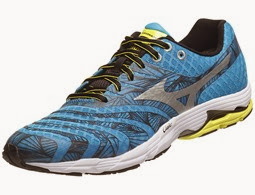 I’ll start this post by stating clearly that people can respond very differently to a given shoe depending on idiosyncratic characteristics of their stride, anatomy, training program (speed, surfaces, etc.) and so on. I’m lucky in that I can run in most shoes without experiencing major issues, but every once in awhile I encounter a shoe that just does not work for me. The Mizuno Sayonara is one of those shoes (disclosure: my pair of Sayonaras was provided free of charge as a review sample by Mizuno).
I’ll start this post by stating clearly that people can respond very differently to a given shoe depending on idiosyncratic characteristics of their stride, anatomy, training program (speed, surfaces, etc.) and so on. I’m lucky in that I can run in most shoes without experiencing major issues, but every once in awhile I encounter a shoe that just does not work for me. The Mizuno Sayonara is one of those shoes (disclosure: my pair of Sayonaras was provided free of charge as a review sample by Mizuno).
I seem to be in the minority among those I know who have run in the Sayonara since the shoe seems to be very popular. I even posted a very positive guest review from my friend Brad Patterson. However, after having run in the Sayonara several times I’ve concluded that it’s just not a shoe for me.
When a shoe doesn’t work out for me I spend a lot of time mulling over possible reasons why. With the Sayonara my initial thought was that it was the relatively high 10mm heel-forefoot drop. I rarely ever run in shoes with greater than 8mm drop – 8mm is the upper end of my preferred range, and most of the time I run in shoes that are 0-4mm drop. It seemed like a logical conclusion that the high drop is what did in the Sayonara.
Then I met the New Balance MR 1400v 2.
The NB 1400v2 is also a shoe with a higher drop than I typically run in (9mm), and stack heights for the two shoes are almost identical – 24mm heel, 14mm forefoot for the Sayonara, 24mm heel, 15mm forefoot for the NB 1400v2. However, after putting 30-40 miles on the 1400v2’s I’ve determined that they are one of my favorite shoes of the year so far. Simply fantastic. I wrote up my review of the New Balance 1400 earlier this week, but couldn’t stop thinking about why they worked so well but the Sayonaras did not.
Yesterday I pulled out the Sayonaras for a bit and things started to crystallize. I’ve been wearing the 1400v2s a bunch casually in addition to running in them, and have never had an issue with comfort. Putting on the Sayonaras they immediately felt stiff and mildly slappy to me even while walking. I started playing around with the two shoes and here is my hypothesis about why two shoes with such similar sole dimensions yielded such different responses on my feet:
The Mizuno Sayonara is killed for me by “technology.”
When you compare the back half of the Sayonara to the back half of the NB 1400v2 (see photos below), two big differences jump out. First, the Sayonaras have a massive plastic heel counter, whereas the 1400’s have no heel counter. Second, the Sayonara has a hard plastic “wave plate” that extends from the back of the heel to the midfoot, the 1400’s have only a plastic shank that begins at the front of the heel and ends at the back of the forefoot. The 1400 shank is also narrow, and it does not extend to the inner and outer margins of the sole – the purpose is presumably to add a bit of longitudinal stiffness since the shoe is built for racing and speed. I’m not sure what the intended purpose of the wave plate in the Sayonara is.
The wave plate in the Sayonara makes the back half of the shoe very rigid, with very little flexibility in any plane, but in particular it lacks torsional (twisting) and mediolateral flexibility. The heel counter really locks the back half of the foot in place. Why is this a problem for me? Here’s what I think.
I’m usually a midfoot to mild heel striker in cushioned shoes, so I tend to land with either most of the outer edge of the shoe contacting, or at a point somewhere between the posterolateral corner of the heel and the midpoint of the arch. The problem with this is that I am contacting along the outer edge with essentially very little cushion between my foot and a big sheet of hard plastic, and this creates a fairly rigid lever that forces my foot to torque very rapidly at contact. You can see how close the plastic wave plate comes to the base of the midsole under the midfoot in the photo below – pretty darn close to where my center of pressure at contact is located (I had this measured earlier this year on a force treadmill).
Mizuno Sayonara – note the grey plastic “wave plate” above the yellow cushion in the heel, also note how the wave plate approaches the bottom of the sole near the midfoot
My hypothesis is supported by what I feel running in the shoes – they feel jerky and slappy, not smooth. It’s kind of like what I’d image running in a dress shoe with a hard rubber heel would feel like. I can adapt my stride to make them more comfortable, but not sure I want to do that (more on this below).
In contrast to the Sayonara, the NB 1400v2 is torsionally more flexible, and the sole is much softer under my contact zone. As such, when I contact the midsole compresses, there is a bit of flex, and the transition into pronation is much smoother and not as rapid. I feel none of the Sayonara induced jerkiness in the 1400, even though the sole dimensions are so similar.
New Balance 1400 v2 – no plastic plate in the sole
As a way to compare the slappiness between the two shoes, I shot this quick video – listen to the difference in sound the two shoes make as a invert and evert my foot:
So how is it that the Sayonara can work so well for some people and not so well for me? As I stated at the outset, running strides vary highly from person to person, and I think this is a case where a shoe is just not a good match for my own stride. In fact, most Mizuno shoes with a wave plate that I have tried feel clunky when I run in them. In contrast, Mizuno shoes like the Universe and those in the Evo collection (Cursoris, Ferus) have worked great for me since they lack a thick plastic waveplate like the one in the Sayonara. Sadly I’ve heard the Evo collection is going away, so the Universe, Ekiden, and Hitogami (depends on how rigid the Hitogami wave plate is, the Musha and Ronin were iffy for me) may be my only workable Mizuno shoes going forward.
![IMG_2789[1] IMG_2789[1]](https://lh3.ggpht.com/-BDVF2CuW--Y/UnPCUl0FH6I/AAAAAAAAMWY/PhcqQvKnNds/IMG_2789%25255B1%25255D_thumb%25255B7%25255D.jpg?imgmax=800) What’s interesting about all of this is that I don’t think my issue would be as noticeable for a forefoot striker or a more pronounced heel striker. A true forefoot striker avoids the wave plate completely so it’s not much of an issue (my friend Thomas is a good example, I’ve seen him run and can confirm he is a true forefoot striker – see his Sayonara review). A more pronounced heel striker may not create as big a lever at the lateral margin of the shoe and would tend to roll forward through the wave plate rather than medially across it like me (the wave plate also appears to have flex grooves in the back of the heel which may help – see photo to right). I think the reason I can make the Sayonara feel better while running is that I can go to one of these different foot strikes and make it work, but that’s also probably why it doesn’t feel smooth to me, it’s making me adapt in a way my body is not used to (and I’m content with how my foot lands).
What’s interesting about all of this is that I don’t think my issue would be as noticeable for a forefoot striker or a more pronounced heel striker. A true forefoot striker avoids the wave plate completely so it’s not much of an issue (my friend Thomas is a good example, I’ve seen him run and can confirm he is a true forefoot striker – see his Sayonara review). A more pronounced heel striker may not create as big a lever at the lateral margin of the shoe and would tend to roll forward through the wave plate rather than medially across it like me (the wave plate also appears to have flex grooves in the back of the heel which may help – see photo to right). I think the reason I can make the Sayonara feel better while running is that I can go to one of these different foot strikes and make it work, but that’s also probably why it doesn’t feel smooth to me, it’s making me adapt in a way my body is not used to (and I’m content with how my foot lands).
I’ll end with a brief commentary on shoe “technology.” One of the things I’ve observed is that shoe companies too often feel tied to a signature technology and in my opinion it can stifle creativity. Newton has their forefoot lugs for example, and Mizuno seems tied to having a plastic wave plate in its shoes. Even when they make shoes that don’t really have a wave plate, they feel compelled to color the sole to make it look like it has one.
For most of the six years I have been running seriously the Mizuno Universe was the only non-Evo Mizuno shoe I really had a great experience with. The Ronin 2 was decent, but even there if I could have ripped the wave plate out I would have (I did remove most of the heel cushion under the wave plate on one of my Roning 2s, but never finished the job on the other side so didn’t get to run in them). I would love to try a version of the Sayonara with the heel counter and wave plate removed. Better yet, give me a 4-6mm drop Ronin 2 with no wave plate and I’d be dancing in the streets. Unfortunately for me, the reality is that in this case “technology” kills the shoe.
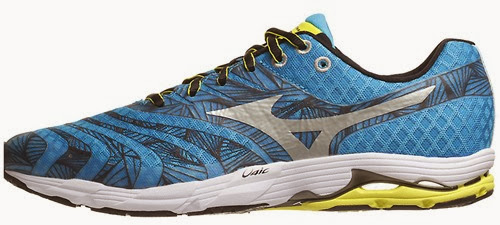

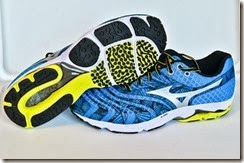
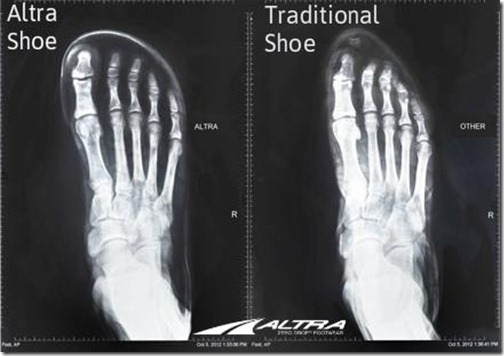
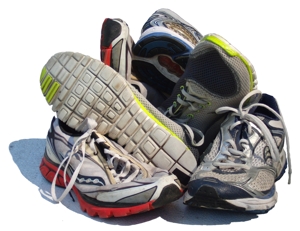
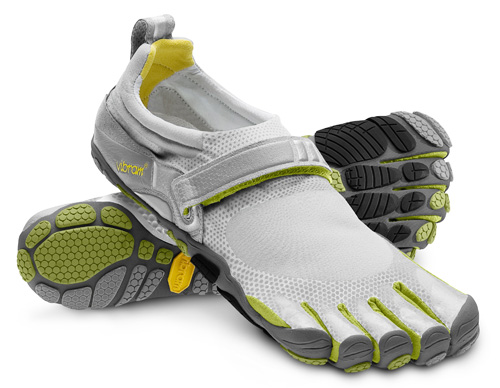















Did you really just say posterolateral?? Holy medical jargon, Pete, I had to google that one! Ha ha, no seriously, this was a very interesting post and you did a great job “sleuthing out” the personal preference problems you have had with the Sayonara. I guess I am fortunate that the wave plate has not caused a problem for me thus far. I am mainly a forefoot striker (at least that’s what the wear on all my shoes shows me), so this could be the reason I don’t have the slappyness that you experience. After reading your review on the 1400v2 and hearing you talk about it in this post, I’m very interested to give it a try for myself.
You can’t take the anatomy prof out of me I guess! Yes, I think as a forefoot striker you would have a different experience, as did Thomas Neuberger. I think I hit right in the spot where this shoe causes problems since the wave plate has no flex grooves.
—-
Pete Larson’s Web Links:
-Performance Health Spine and Sport Therapy<http: about-us=”” dr-peter-larson=”” performancehealthnh.com=””>
-My book: Tread Lightly: link to ow.ly
-Blog: https://runblogger.com
-Twitter: link to twitter.com
-Facebook Page: link to facebook.com…
-Discussion Forum: https://runblogger.com/forum</http:>
I run a lot in NB 890’s and the Sayonara was my first venture into Mizuno shoes. After a very short break in I ran a half-marathon in the Sayonara’s. They felt quite stiff to start but after a few km were quite comfortable and feel “fast”.
Thanks for the great review. Ironically for me it may make me try them. I love Kinvaras, but with my heal strike over 13 miles I start to feel beat up. I did my first marathon in Elixirs and wondered if the sayonaras would have the same support. Perhaps they will. Thanks again.
It’s all about finding the right match. If you are a heel or forefoot striker these will probably feel fine, but a midfoot or mild heel striker like me may have trouble due to the wave plate design. In a sense I view reviews not so much as good or bad, but instructive. You always have to keep in mind the running style of the reviewer when interpreting things.
—-
Pete Larson’s Web Links:
-Performance Health Spine and Sport Therapy<http: about-us=”” dr-peter-larson=”” performancehealthnh.com=””>
-My book: Tread Lightly: link to ow.ly
-Blog: https://runblogger.com
-Twitter: link to twitter.com
-Facebook Page: link to facebook.com…
-Discussion Forum: https://runblogger.com/forum</http:>
Hi Pete, long time lurker, first time poster. I too am a midfoot striker, and I borrowed my friend’s (a Minzuno-sponsored athlete who raved about them) Sayonara’s for an 8 mile run and found precisely what you describe — plus medial achilles pain that initially made me suspect the drop was less than advertised (I normally run in racer trainers from 8-10 mm). I have a pretty wide forefoot and narrow heel, and the Sayonaras just felt incredibly sloppy and unresponsive for such a fairly firm shoe. I will try on those NBs you review, as my stored-up 2011 Adidas Manas are now moribund. I also like the adizero adios 2 and wonder if you have tried the new adizero boost. I am a bit wary of NB as I tried the 110 and 1010 and found the uppers in both sloppy for me–I want to feel like a shoes is an extension of my foot, as when I do run barefoot I have no achilles or calf problems, but shoes with drops either much greater than 10mm (Mizuno precision say) or less than 6mm (e.g adidas gazelle) make me feel like I am pronating too much– the former due to too much heel cushion, the latter due to a lack of the proprioception you get from going truly barefoot on grass. The discontinued old edition Manas were in that sweet spot for me, and I need to find a replacement for them yesterday! Cheers and thanks for the review
Thanks for the first comment, and for reading! I believe both of those other NB shoes are on the Minimus last, which is a wider fit and thus might explain the sloppiness. The 1400 is on a different last, hugs my foot perfectly. I have run in the Adios 2, but not in the Boost version. I found the Adios to be a bit pointy and constricting up front, but am tempted to try again in a half size larger. If only the Boost weren’t so expensive…
I never ran in the Mana, nut the 1400 may be worth a try if you like cushiony racing style shoes. It’s quickly become a personal favorite!
—-
Pete Larson’s Web Links:
-Performance Health Spine and Sport Therapy<http: about-us=”” dr-peter-larson=”” performancehealthnh.com=””>
-My book: Tread Lightly: link to ow.ly
-Blog: https://runblogger.com
-Twitter: link to twitter.com
-Facebook Page: link to facebook.com…
-Discussion Forum: https://runblogger.com/forum</http:>
Yes the adios is as you’ve described, but I overlook that for the responsive ride. It looks clunky for its weight, but really encourages a quick turnover. And yeah, the boost is way overpriced. But I dig the adizero line for not being overly plush (like my nike frees, say).Going in search of the 1400 tomorrow, thanks!
I had a similar situation with a highly recommended Nike shoe, but then ended up with severe pain in my foot. Switched back to known good shoe and life was good again. Great review, thanks.
Same issue I had. I though this shoe would be great for me after the reviews and it just made my feet,legs everything hurt whether on pavement,track or treadmill. After a week of suffering I went and got my go to Nike Free’s and all was well.
I would actually use the Nike Frees as an example of a shoe with polar opposite construction in the back half of the shoe – soft and extremely flexible. I vastly prefer the Frees for my stride as well.
—-
Pete Larson’s Web Links:
-Performance Health Spine and Sport Therapy<http: about-us=”” dr-peter-larson=”” performancehealthnh.com=””>
-My book: Tread Lightly: link to ow.ly
-Blog: https://runblogger.com
-Twitter: link to twitter.com
-Facebook Page: link to facebook.com…
-Discussion Forum: https://runblogger.com/forum</http:>
Out of curiosity, do you know if you are a midfoot striker?
—-
Pete Larson’s Web Links:
-Performance Health Spine and Sport Therapy<http: about-us=”” dr-peter-larson=”” performancehealthnh.com=””>
-My book: Tread Lightly: link to ow.ly
-Blog: https://runblogger.com
-Twitter: link to twitter.com
-Facebook Page: link to facebook.com…
-Discussion Forum: https://runblogger.com/forum</http:>
Former heel striker who used Newtons(Gravity) to develop a midfoot strike.
Just as an aside most shoes you reccomend work great for me I love the Kinvara but I chew them up very quickly,the fastwitch was great but my local shops do not carry them so I went into the frees and all versions work great for me 5.0,4.0 and 3.0 but I have been staying in the 5.0 because the upper is the most comfortable and that is where I have stayed until the bug to try something new (the sayonara) came in and I was really bummed they didnt work
Great, thanks! I think it’s the midfoot strikers who will be most likely to have trouble
—-
Pete Larson’s Web Links:
-Performance Health Spine and Sport Therapy<http: about-us=”” dr-peter-larson=”” performancehealthnh.com=””>
-My book: Tread Lightly: link to ow.ly
-Blog: https://runblogger.com
-Twitter: link to twitter.com
-Facebook Page: link to facebook.com…
-Discussion Forum: https://runblogger.com/forum</http:>
Interesting. I tried these on at one of the LRS and at the time I thought they were one of the smoothest shoes I’ve ever tried. I didn’t get them because my midfoot/heel area is wide and these shoes did not fit that well. At the time I was forefoot striking too, but now I midfoot/mild heel strike because I was tired of getting shin splints forefoot striking. I’m curious if the shoes would feel different now.
So are you saying that the Sayonara and the 1400v2 are about as close as possible as it is relative to the different dynamics in the shoe (heel drop, stack, etc)? I have been running in the Sayonara; did 20 miles today in fact. I’ve got a marathon in December. I have TRIED to hate the Sayonara’s as I do feel some ankle discomfort and pain towards the end of runs and especially afterward. I wonder if some of my problem is associated with what you’re speaking of? I’m a mid-foot striker to slight heel striker (especially in these shoes). Interesting.
Yes, exactly. The sole dimensions are almost identical, but the stuff inside the heel area differs and thus the feel is very different. The Mizuno does stuff that I don’t like to my ankle, no such issues in the NB 1400v2.
—-
Pete Larson’s Web Links:
-Performance Health Spine and Sport Therapy<http: about-us=”” dr-peter-larson=”” performancehealthnh.com=””>
-My book: Tread Lightly: link to ow.ly
-Blog: https://runblogger.com
-Twitter: link to twitter.com
-Facebook Page: link to facebook.com…
-Discussion Forum: https://runblogger.com/forum</http:>
Thanks, Pete! Appreciate the information. Very constructive and helpful to me. Got me thinking for sure.
Very interesting thought about this working for forefoot or heel strikers, but not midfoot. I’ve been a forefoot striker since high school, nearly 20 years ago. In recent years I’ve done the vast majority of my runs in various pairs of inov-8s, which I assume have quite a bit less “technology,” as you call it, in comparison to the Sayonara.
One thing I’ve found in the past couple years is that as I start to get near and beyond 10 miles or so, I’ve at times developed minor posterior shin splints which rarely bother me during runs, but often become quite painful when walking around on the day after a longer run.
On a whim this summer, I decided to try the Sayonaras based solely on a local store’s recommendation. They fit my feet well and felt good on the treadmill in the store, but after the purchase I did not like them in the early miles of my first few real runs. However, I soon realized beyond about 4 miles I love them. And, most notably, I’ve started to experiment with my stride just a bit, and I now find myself bombing downhills in the Sayonaras with a full-on heelstrike with no pain or discomfort during or after my runs. Maybe it’s just a matter of the extra cushioning, but I don’t seem to be able to pull off the same feat in my Saucony Peregrines which also feel pretty cushy. And, I remain a pretty pronounced forefoot striker on the flats and uphills, and always in my inov-8s.
Anyway, I usually stick with inov-8s under 4-5 miles, and often go for the Sayonaras beyond that. Very different shoes to be sure, but I like ’em both.
Pete, as a follow up–what is your thoughts on the NB 1400 v2 being your “everyday” trainer? That is what I have been using the Sayonara as.
I’d have no problem using the 1400 as an everyday trainer
—-
Pete Larson’s Web Links:
-Performance Health Spine and Sport Therapy<http: about-us=”” dr-peter-larson=”” performancehealthnh.com=””>
-My book: Tread Lightly: link to ow.ly
-Blog: https://runblogger.com
-Twitter: link to twitter.com
-Facebook Page: link to facebook.com…
-Discussion Forum: https://runblogger.com/forum</http:>
Very interesting. I was running solely in 0mm to 4mm drop shoes with a forefoot strike for around 2 years. I developed Achilles tendinitis and moved to higher heel-to-toe ratio neutral shoes and adjusted my stride to a midfoot/slight heel strike. I have been running injury free for almost a year now and my favorite shoe is the Wave Sayonara. I do not notice the wave plate like you mentioned and I seem to strike in that exact area. I guess it proves the theory that everyone is an experiment of one!
The wave plate didn’t bother me so much, but that heel-counter killed them for me. Those NB 1400s look good – simple is hard to beat.
The heel counter is huge! Still see no reason for a heel counter in most shoes.
—-
Pete Larson’s Web Links:
-Performance Health Spine and Sport Therapy<http: about-us=”” dr-peter-larson=”” performancehealthnh.com=””>
-My book: Tread Lightly: link to ow.ly
-Blog: https://runblogger.com
-Twitter: link to twitter.com
-Facebook Page: link to facebook.com…
-Discussion Forum: https://runblogger.com/forum</http:>
Having run extensively with Mizuno shoes, from the Universe and Cursoris all the way up to the Nirvana, I think the most similar Mizuno model to the 1400 is either the Ronin or Musha. I also own a pair of 1400 v1 and really, really like them. The Sayonara is a part daily distance, part tempo shoe. The 1400 is part racer, part tempo shoe. In my rotation, I use the Musha interchangeably with the 1400, not the Sayonara. It’s not surprising that you didn’t like the Sayonara because it is too built up for your preference even if it were a 4mm heel drop with resin wave plate. The 1400 is a sweet shoe, and I enjoyed reading your review and willingness to appreciate the shoe despite its lack of credentials in the low heel drop department.
It’s not so much that it’s built up, I really think the wave plate is the culprit. Had a similar experience in the Musha. And I’ve run in shoes with built up uppers and no wave plate that have no caused trouble.
Sent from my iPad
Yes, you mentioned the 1400 has more torsional flexibility. The wave plate ends up acting like all these shank bridges that appear in various forms as trussics, torsion bars, and support bridges. I think Mizuno has taken a love-it-or-hate-it approach that isn’t for everyone but loved by a segment of the marketplace. If your name isn’t “Nike” it’s not a bad strategy.
I’ll just say that I hate a “slappy” shoe. I’ve never been sure what causes that feeling. Maybe this is it.
the sayonaras look stiff in those pictures..ecch
I wonder what gait differences, if any, your slow motion video analysis would show for a shoe that feels good for you-1400 compared to one that doesn’t, Sayonara and one could see what you suppose is happening “A more pronounced heel striker may not create as big a lever at the lateral margin of the shoe and would tend to roll forward through the wave plate rather than medially across it like me”
I would be happy to film you in action! “Plates” are a tricky thing. I think judiciously placed stiffer frames can help make relatively soft midsoles more responsive and directed in the path of travel if not more stable without being a stability system in the traditional sense. Boost for me with the Torsion system a great example.
Out of all my shoes my current favorites are now an old pair of Asics Tarthers 2 with the heel chopped off (stock was 10mm drop), partly inspired by your experiment with chopping the Ronin 2s. It was awkward in the beginning, but the exposed EVA heel “molded” itself quickly to my footstrike after a few runs and now they run like a dream. The sole structure is basically a racing flat but the upper has a wider toebox more akin to a light trainer. Firm forefoot is perfect for track workouts and I can do short tempo runs on concrete in them. I’m so in love with the old school back-to-basics feel (and looks!) that I actually have to force myself to use my other shoes to get the mileage out of them. I suspect they’re essentially the Hyperspeeds with a firmer forefoot now but I’ve never gotten a chance to run in the Hyperspeeds.
Would love to hear how the chopped Ronins run if you ever get around to them.
Very good read. Thanks!
I strike midfoot, too. Currently running on just NB MR00 (I don’t run a lot) for a couple of years. During recent runs, my knee gave me sharp pain after about 5km, so I was thinking of getting something with some cushion. I almost decided on picking these up… But now, after reading this + tried them on today myself, I am not sure if I should :D
Tough call, a lot of people like them, just not for me.
—-
Pete Larson’s Web Links:
-Performance Health Spine and Sport Therapy<http: about-us=”” dr-peter-larson=”” performancehealthnh.com=””>
-My book: Tread Lightly: link to ow.ly
-Blog: https://runblogger.com
-Twitter: link to twitter.com
-Facebook Page: link to facebook.com…
-Discussion Forum: https://runblogger.com/forum</http:>
I completely agree with what you’re saying. I’ve come to the same conclusion about how torsionally stiff shoes affect a midfoot striker’s stride: for me, rigid and higher-heeled shoes cause shin splints, and I believe it’s because of the rapid slap from first lateral contact to full contact. Flexible shoes allow pronation to be slower and better controlled. I’d love to see some actual scientific data about this: anyone done research in the topic “effect of running shoe flexibility on rate of pronation”?
Something I definitely plan to dig into, need to hit google scholar!
—-
Pete Larson’s Web Links:
-Performance Health Spine and Sport Therapy<http: about-us=”” dr-peter-larson=”” performancehealthnh.com=””>
-My book: Tread Lightly: link to ow.ly
-Blog: https://runblogger.com
-Twitter: link to twitter.com
-Facebook Page: link to facebook.com…
-Discussion Forum: https://runblogger.com/forum</http:>
I am so late to reading this article and its insightful comments! We have tested the effects of shoe torsion on many aspects of running and walking at Heeluxe, including rate of pronation and blood lactate concentrations. Basically, a more flexible shoe is good for short runs (<30min) and the advantage of a more torsionally stiff shoe increases incrementally for most runners over that time.
Interestingly, some shoes with a shank or truss (or wave plate) are not that stiff; some shoes without a stabilizing element have a lot of rearfoot stability based on the type and shape of foam…
Thanks for your review. I wore the Sayonara for a 10 mile run and they hurt my calves and ankles and felt so stiff. I thought they would be similar to the Adidas Adios that I currently wear since the shoe fitter on Runningwarehouse.com showed it to be similar. It did “fit” like the adidas and had a nice roomy toe box but no comparison for comfort. The shoe is getting exchanged or returned. Thanks for figuring it out.
If you like the adios, try the New Balance 1400 v2 or Brooks T7. Both run better for me than the Sayonara.
—-
Pete Larson’s Web Links:
-Performance Health Spine and Sport Therapy<http: about-us=”” dr-peter-larson=”” performancehealthnh.com=””>
-My book: Tread Lightly: link to ow.ly
-Blog: https://runblogger.com
-Twitter: link to twitter.com
-Facebook Page: link to facebook.com…
-Discussion Forum: https://runblogger.com/forum</http:>
I had the EXACT same experience! “Slappy”, and the front-end of the wave plate acted like a hinge in the middle of the sole… it created the worst transition I’ve ever experienced in a running shoe. FWIW, I too am a mid-foot to light heel-striker.
These shoes have gotten such good reviews, but I too have found that they do not work for me. I like them when I tried them on in the store.
Since getting them home, my back and feet hurt within an hour of simply wearing them in the house.
Is the attempt to make a dual neutral / stability shoe part of the problem? I need a neutral shoe. The Brooks Cascadia works for me and it also is a dual neutral/ stability shoe
I think it’s the rigid, firm heel for me that ruins it. The Mizuno Hitogami feels much better and has a similar fit and profile.
Just came across this interesting article as I was googling for information on the Sayonaras. Still think I’ll try them though! Here’s why: I’m currently using only Mizuno Wave Riders (16 and 17) and am looking for something lighter with a slightly lower heel. The Sayonara seems to be just that. I think it’s exactly the rigid heel that has made me love the Wave Riders – I used to use ASICS Nimbus when I ran less frequently and slower than now, they now feel like my heel is sliding in any direction when I tried them. I have a pair of Nike Vomeros that are completely useless, the soft heels give no support and make me feel like their sucking all the power out of my stride!
Do you think my impression that the Sayonaras would work as a lower and lighter alternative to the Wave Riders is right?
I think so, the heel is quite firm so if that is what you are looking for definitely worth a try!